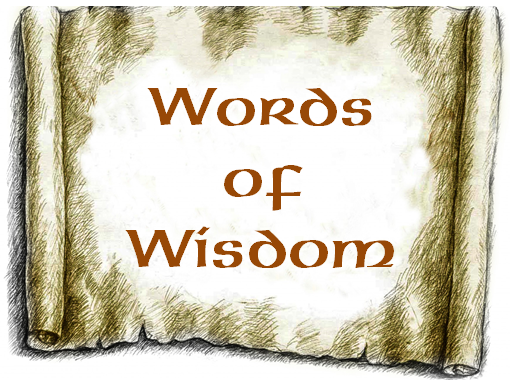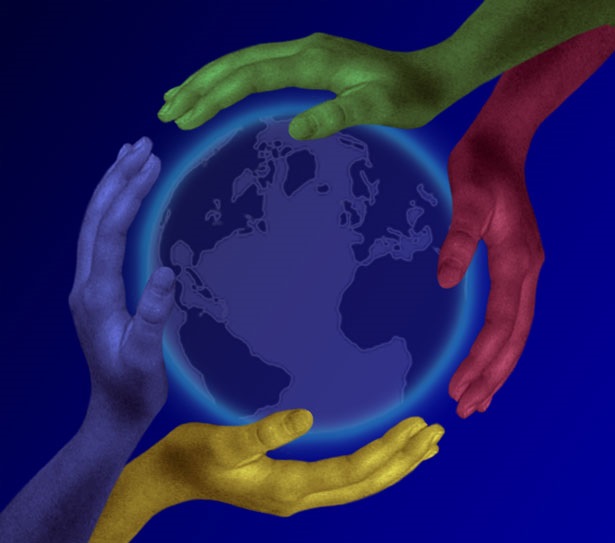

What's New

Words of Wisdom
52
cards and 15 activities to spark conversations and make sense of learning.
Learn more HERE.
What We Do
The Firefly Group helps people make sense of what they learn and experience.
Whether facilitating a group for better decision-making, keynoting a conference, leading a training, or writing an instructional design, we use novel methods that engage, spark creativity, and produce memorable results.
 If
this sounds like a good direction for your organization, let's talk about
how we might collaborate! Please give me a call (802.257.7247) or send an
. - Brian
If
this sounds like a good direction for your organization, let's talk about
how we might collaborate! Please give me a call (802.257.7247) or send an
. - Brian
 Your ETR (Estimated Time to Read): 10 minutes Your ETII (Estimated Time to Implement Ideas): 5 weeks |
What
can you teach with a eight washers tethered to a string?
Watch my video in the Activity below and find out!
August
2017
Two
Team Elements for Instant Success
|
Say
It Quick |
Discoveries bits of serendipity to inspire and motivate |
Ideas fuel for your own continuous learning |
Activities tips and tricks you can try today |
|
Please Go Practice! - Why we don't do what we should do |
Two Team Essentials - Identification and Interdependence |
Team for a Day - Simple strategies to create a team |
Instant Teams - Build a team in twenty minutes |
First, here's a special welcome to all my new friends in Montpelier, Vermont who attended the workshop, "Diverse Teams: The Power of Difference" sponsored by the Center for Achievement in Public Service (CAPS), a division of the Vermont Department of Human Resources. - Brian
Readers Respond
"I always enjoy your two contacts each month. The perspectives are fresh and your activities are such great examples of effective facilitation. I believe these are two of the distinguishing factors between knowledge that leads to learning or knowledge that is quickly forgotten." - Stephen Schumann
There is much ado about teambuilding in organizations. You can spend thousands of dollars, retreat for days, and conduct personality assessments but still be plagued by dysfunction and discord. Yet there are two simple elements of successful teams that are often left out of traditional teambuilding strategies. Learn what they are and how they are connected to intrinsic motivation in this issue beginning with this story in exactly 99 Words.
Please Go Practice!
When we tell our daughter it's time to practice the clarinet, she reluctantly makes several trips to bring her music, instrument, music stand, and chair all the way down from her room to the living room where her mother and I are sitting. I couldn't figure out this behavior. Why not practice in her room?When I read the work of psychologist Edward Deci I finally got it. Who wants to be all alone while doing something they didn't choose and can't do well? The three keys to intrinsic motivation had been missing: relationships, autonomy, competence!
.jpg) Two
Team Essentials
Two
Team Essentials
A few weeks ago I facilitated a workshop on Diverse Teams. During the planning
I realized that rather than talking about teams, the group should spend
a lot of time being a team. At the start of the workshop, participants
formed and worked in teams for the duration of the day (more about that in
the Ideas section of this News Flash!) I decided to focus this experience
of "teamness" on two essential elements of successful teams: Identification
and Interdependence.
I was inspired by a description of what makes teams click written by Clifford Nass in his book The Man Who Lied to His Laptop. In his chapter about teambuilding, Nass makes the point that most teambuilding activities fall flat because they don't create opportunities for Identification and Interdependence.
A sense of shared Identification refers to the positive ways individual team members relate to one another. The more interests and experiences they have in common, the more affinity they feel to each other. These commonalities can be associated with culture, history, experiences, interests, beliefs, language, and so on. The more unusual the examples of Identification, the stronger the ties within the group are likely to become.
Interdependence refers to the way a team works together to accomplish its goals. Group goals should match individual goals so that the efforts of everyone are integral to team success. The team needs to see the value of being a team; that their work could not have been accomplished by disconnected individual activities; that it makes a difference to be a member of this team.
To foster Interdependence, emphasize cooperation and recognize each team member's contribution to the shared goal. Provide opportunities for the team to work together and be successful. Talk about the importance of their efforts and describe how their goal could not have been accomplished without every person's input.
The 99-Word Story offers some clues about why Identification and Interdependence are key for team formation. Like my daughter practicing the clarinet, we tend to do things for those with whom we have a shared relationship; a shared Identification. Then, in our common success, everyone in the group demonstrates their Interdependence.
It may seem obvious to say that Identification and Interdependence are essential for team success. But rarely are the key ingredients for teams spelled out so succinctly. Yet each of us who has been on more than one team can probably describe a time that these essential elements were missing.
More Information:
The Man Who Lied to His Laptop reviewed in the April 2011 issue of the Firefly News Flash.The Man Who Lied to His Laptop by Clifford Nass, Penguin Group, © 2010, ISBN 978-1-61723-001-1
Team
for a Day
In his discussion about teams, Clifford Nass lists many specific strategies
to foster Identification and Interdependence in teams. I used several during
my Diverse Teams training.
At the start of the day, I had people form random teams. Though many knew each other already, I challenged them to discover interests they shared in common but hadn't known about before. (See the Activity section later in this News Flash for specifics.)
 When
groups were formed they sat at a color coded table: blue, green, or red. Each
table was set with a table cloth, name tags, sun glasses, Hawaiian leis, and
other items in their team color.
When
groups were formed they sat at a color coded table: blue, green, or red. Each
table was set with a table cloth, name tags, sun glasses, Hawaiian leis, and
other items in their team color.
Before we began any formal learning about team diversity, the groups were asked to make a poster showing a team name of their choosing, a mascot, and a list of their common interests. Each team then had a chance to share their poster and introduce their members to the whole participant group. Each presentation was followed with a round of applause.
Throughout the day, people sat with their team and worked together whenever there was an opportunity for discussion, small group work, or completing projects. In some cases, when the teams reported to the whole group, they received a token award of recognition for their efforts and always a round of applause from the whole group.
This day-long strategy gave everyone a tangible example of how to encourage Identification and Interdependence in a team. The color coding and team posters fostered Identification. The team activities and presentations established a pattern of Interdependence. The awards were not conditional rewards. Every award was given with specific feedback about how the team had excelled. I made a point of giving an award specific to each team because I wanted to downplay the possibility of rivalry among the three teams.
It's important to be smart about how you implement these strategies. For example, having strong team identifiers like T-shirts, in-jokes, or slogans are great for Identification but they can make it hard for new members to join a team. And an emphasis on Interdependence that is too strong could pit one team against another and end up compromising everyone's ability to achieve organization-wide goals.
For workplace teams, it's critical to regularly reinforce Identification and Interdependence without emphasizing them so much that they undermine the benefits of teamwork.
According to Nass, people who feel part of a team:
Oh, and by the way, notice how nicely these advantages of teams - especially the last - dovetail with the intrinsic motivators highlighted in the 99-Word Story: relationships, autonomy, and competence.
Instant
Teams
Here is an activity that can be used to increase Identification in both new
and existing teams. It is also appropriate when new members join an established
team. Use it to build or reinforce a team in as little as twenty minutes.
Instant Teams
Goal: To establish or increase shared Identification within a team
Materials: Bell or whistle
Participants: Any number of people; an even number is best. For an odd number, have one initial group of three or become a participant yourself.
Time: 20 minutesProcedure:
Ask people to stand and silently wander about the room. On the signal of your bell or whistle, ask people to stop and choose someone near them as their partner. Help people without a partner to find each other.Instruct people to introduce themselves then find three things in common with their partner. These can be interests, hobbies, skills, people, points of view, experiences, and so forth. There are two rules: a.) Nothing obvious like physical characteristics or work related like known interests and skills; b.) Strive for the uncommon and unusual. Allow about three to four minutes.
Blow the whistle at the end of four minutes and ask each pair to make a group of four with another pair nearby. Help odd pairs to find each other.
In this round, the rules are the same. Have the four introduce themselves to each other and challenge them to identify at least four things they have in common. Allow about five minutes.
At this point you can stop the activity or lead another round forming groups of eight.
Options:
For a new team you are forming or for a one-time team, have each group make a poster with their team name, mascot, and the four things they have in common.
For an existing team, lead a short discussion with some of these questions:
- What are some things you learned about individuals that you didn't know before?
- What interests of others might you want to know more about and when might you ask them to share that?
- To what degree does sharing common interests with other people make it easier to work with them?
- At what point does it become inappropriate to share personal information in a team?
- What else would help improve working relationships in our team?
Please give this activity a trial with your group then your experience!
|
Whether you need a keynote speaker, or help with strategic planning, performance improvement, or training facilitators and trainers in your organization, I look forward to your call (802.380.4360) or . -- Brian |
Read previous
issues. Click Library!
To add or delete your name to our mailing list, email
with a short note in the subject line.
I want this newsletter to be practical, succinct, and thoughtful. If you have suggestions about how I can meet these criteria, please let me know! Send me an with your thoughts and ideas.
Home
| Services | Products
| Mission | Ideas
| The Group | The
Buzz
(c)
2017 The Firefly Group